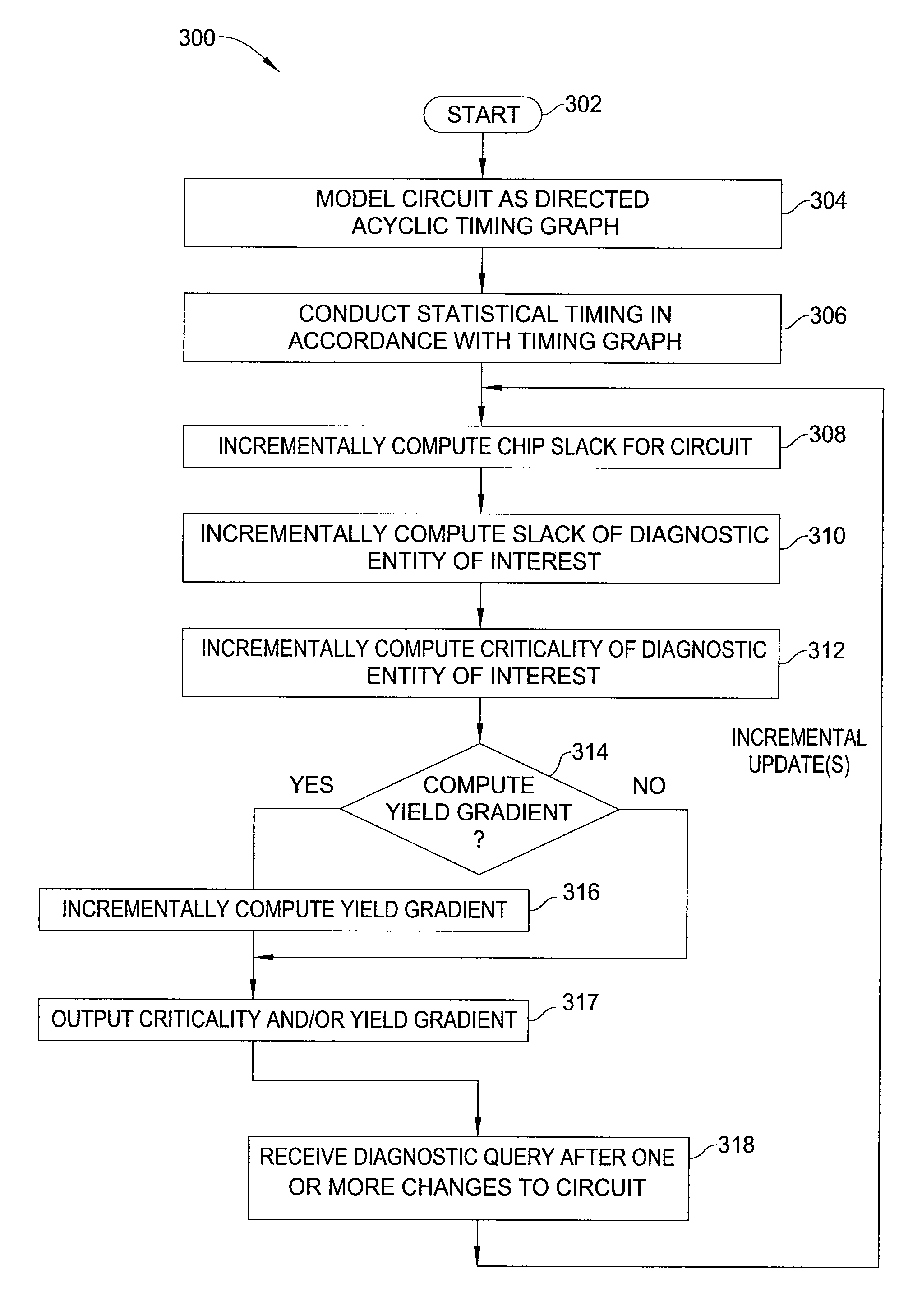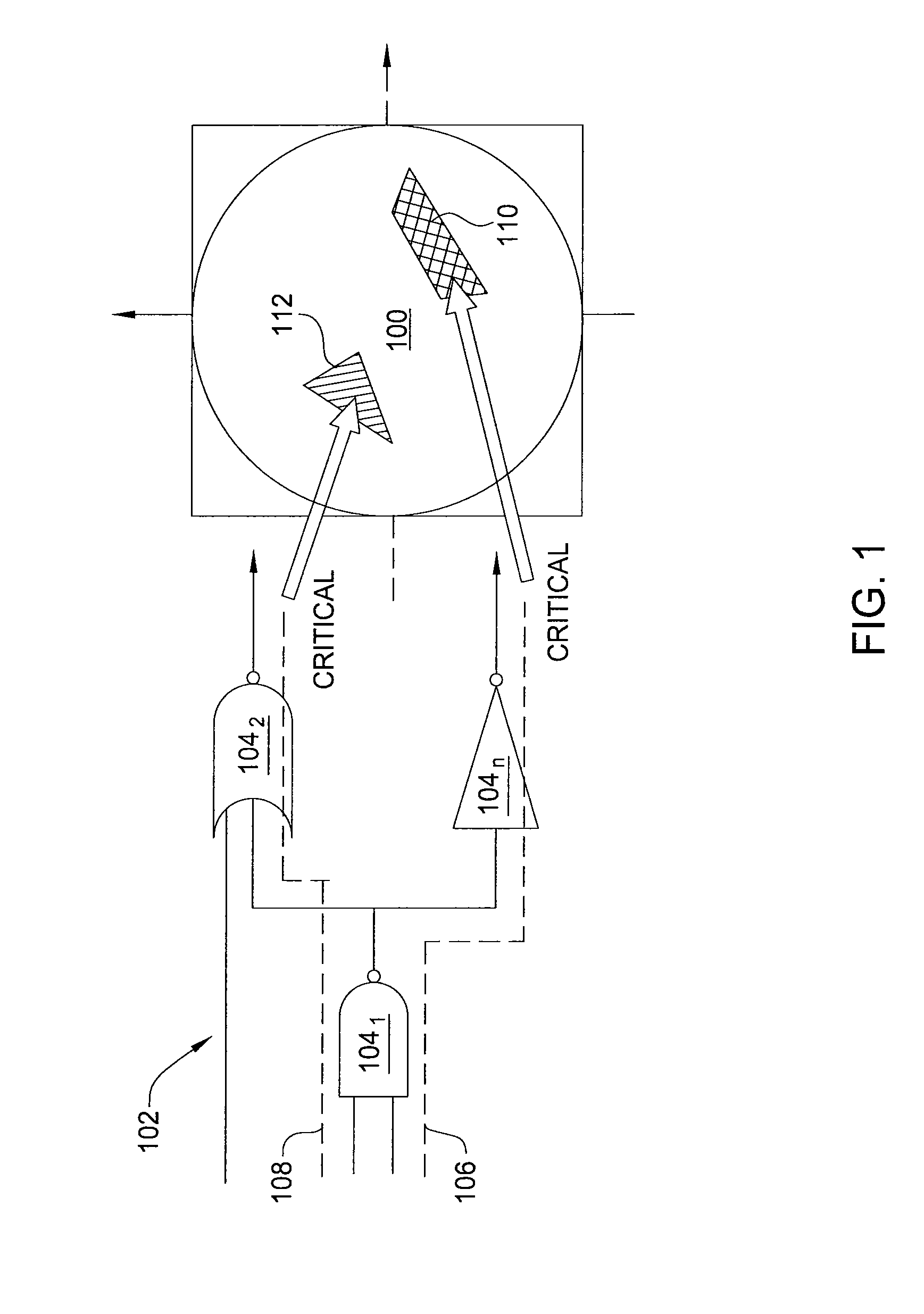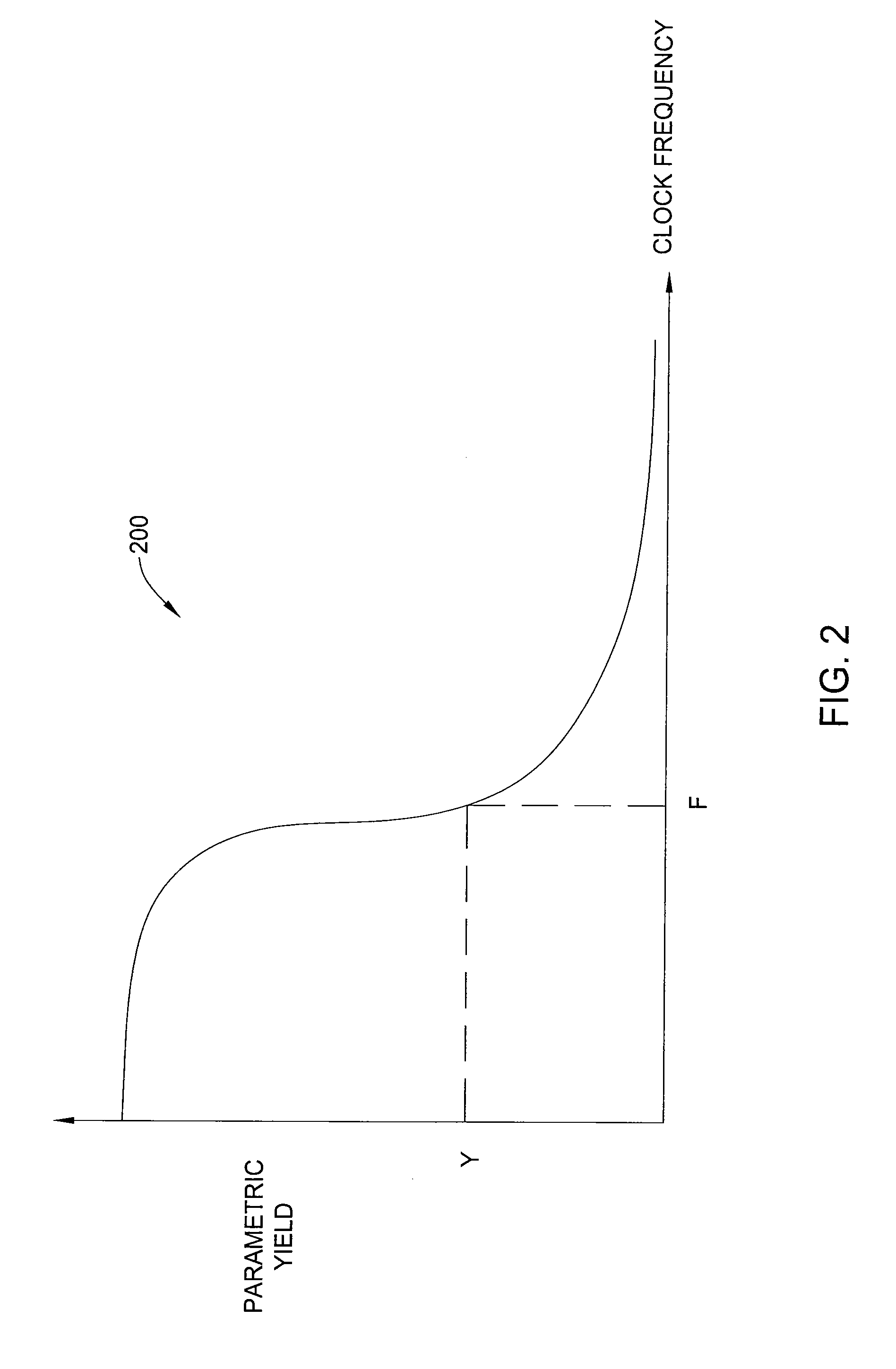Method and apparatus for incrementally computing criticality and yield gradient
a technology of criticality and yield gradient, applied in the field of statistic timing analysis, can solve problems such as inefficient methods for optimizing large circuits
- Summary
- Abstract
- Description
- Claims
- Application Information
AI Technical Summary
Benefits of technology
Problems solved by technology
Method used
Image
Examples
Embodiment Construction
[0017]In one embodiment, the present invention is a method and apparatus for incrementally computing criticality and yield gradient. One embodiment of the invention represents the circuit as a directed acyclic timing graph, and then computes the criticality of nodes, edges, and paths of the timing graph (the term “diagnostic entity”, as used herein, refers to a node, edge, or path of the timing graph). Further embodiments of the invention compute the gradient of the parametric yield of the circuit with respect to components of the delay of each diagnostic entity. Embodiments of the present invention compute criticality and yield gradient in an incremental manner, thereby minimizing the computational intensity of timing analyses.
[0018]FIG. 1 is a schematic diagram illustrating the concept of “criticality”, as used within the context of the present invention. Specifically, FIG. 1 illustrates a netlist 102 corresponding to a chip design manufactured in a two-dimensional space of manufa...
PUM
 Login to View More
Login to View More Abstract
Description
Claims
Application Information
 Login to View More
Login to View More - R&D
- Intellectual Property
- Life Sciences
- Materials
- Tech Scout
- Unparalleled Data Quality
- Higher Quality Content
- 60% Fewer Hallucinations
Browse by: Latest US Patents, China's latest patents, Technical Efficacy Thesaurus, Application Domain, Technology Topic, Popular Technical Reports.
© 2025 PatSnap. All rights reserved.Legal|Privacy policy|Modern Slavery Act Transparency Statement|Sitemap|About US| Contact US: help@patsnap.com



